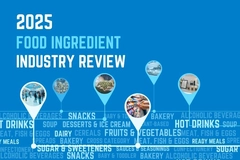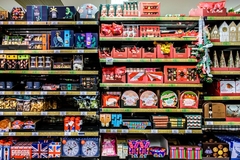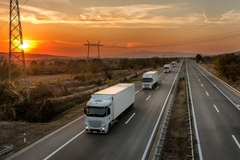
- Industry news
Industry news
- Category news
Category news
- Reports
- Key trends
- Multimedia
- Journal
- Events
- Suppliers
- Home
- Industry news
Industry news
- Category news
Category news
- Reports
- Key trends
- Multimedia
- Events
- Suppliers
BMPA: Megafarms, livestock welfare standards and crisis in the meat industry

The UK meat industry is facing serious challenges amid growing public scrutiny on animal welfare standards and environmental destruction, which is helping drive critical workforce shortages. Increasingly, production is shifting toward larger, consolidated “mega farms,” housing tens of thousands of animals, reflecting the rise in economic pressure on production quality and ethical standards.
Industry leaders claim that modern technology on modern mega farms can enable better welfare compliance, and that the sector’s public image must urgently change, as acute labor shortages are resulting in business closures and disrupting supply chains throughout the UK.
Food Ingredients First speaks with Nick Allen, chief executive of the British Meat Processors Association (BMPA), to discuss how the £12 billion (US$16 billion) industry is handling numerous crises at a time of growing human and environmental concern, and what this could mean for the food industry’s future.

What explains the emergence of so-called mega farms in the UK, where tens of thousands of animals can be reared together?
Allen: I think the first thing to say is that compared to what we’re competing against globally, these farms aren’t particularly big. In the US, South America, and China, many countries have much larger farms. Here, it’s partly because there hasn’t been much investment in livestock farms for a couple of decades. We have many outdated buildings and setups, so people are building new sites and consolidating to benefit from economies of scale. The bigger you make them, the more sense it makes. But by international standards, they’re not especially large.
A lot of consumers have concerns about the welfare of animals used for meat production. Do you think you can realistically enforce high welfare standards on such big farms?
Allen: Yes, and I’d argue it actually makes it easier. With fewer but larger units, regulators have fewer places to inspect. Our assurance schemes can check these more efficiently. Also, these units are built from scratch to modern standards: proper handling facilities, good ventilation, cooling systems, and improved slurry management. It’s easier to maintain high welfare standards in these modern buildings than to adapt old, scattered facilities.
We constantly see images of animals crammed into confined spaces, suffering all kinds of mental and physical agony. Should we not be concerned about this? 1.jpg) Watch our interview with Nick Allen here.Allen: The UK has some of the highest animal welfare standards in the world, and we place more emphasis on welfare than many other countries. Of course, with many people and units involved, some non-compliance will happen, but overall, we go to great lengths to ensure high standards.
Watch our interview with Nick Allen here.Allen: The UK has some of the highest animal welfare standards in the world, and we place more emphasis on welfare than many other countries. Of course, with many people and units involved, some non-compliance will happen, but overall, we go to great lengths to ensure high standards.
To some extent, it’s time to rebuild some of these units. New facilities must comply with modern space requirements, which are among the highest globally, better than many countries, and only matched perhaps by Scandinavia. The challenge is compliance, but it’s easier in purpose-built modern farms than in old buildings built decades ago for smaller operations.
What do you make of evidence suggesting livestock farming should be reduced for climate change reasons, and that government intervention is justified?
Allen: I think that argument is dangerous, especially in this part of the world. The UK and Northwest Europe have an excellent climate for livestock. It’s neither too hot nor too cold, and we have some of the best grass-growing conditions worldwide, which results in a low carbon footprint for ruminant animals.
If anything, we should encourage livestock production here to serve the rest of the world and produce meat with a much lower carbon footprint than many other places. I’m concerned that government schemes encouraging less production, especially based on net-zero ambitions, could backfire if they lead to increased imports from regions with higher carbon footprints.
But doesn’t meat production in the UK require massive imports of crops like soy from other countries?
Allen: For pig farming, we do import a lot of soy, but we’re increasingly finding ways to replace that with alternative proteins like beans and peas. You can’t avoid some soy imports, as many countries producing intensive livestock do the same. But for ruminants — beef and lamb — we have a perfect climate and grasslands ideal for production. It’s nonsense to reduce production here only to import meat with a higher carbon footprint.
Also, where are you going to grow all those crops without fertilizer input from livestock?
But aren't plant-based fertilizers already widely available?A drop in cheap foreign labor is causing a critical labor shortage in British slaughter houses.Allen: In many parts of the world, livestock and crop production are integrated systems. Livestock provide nutrients essential for crop growth. Without them, you’d be constantly depleting soils. The sustainable system involves both. At the bottom line, we have to consider whether we measure countries by production or consumption when addressing climate change. It’s complex.
Evidence shows livestock accounts for 10-12% of the UK’s total GHG emissions. Does replacing some production with plant-based protein make sense?
Allen: The figure sounds high, but remember, this is food production essential for human survival. You can’t feed the world population without livestock because not all land is arable. About 70% of UK land is grassland that can’t be cultivated, so you’d have to plant trees, which don’t feed people. Well-managed grassland sequesters carbon as effectively as woodland. The idea that the only solution is to reduce livestock isn’t realistic globally.
Do you think an international reduction in livestock is feasible?
Allen: It’s not happening. Meat consumption globally is rising due to population growth and increasing income levels. Some countries need more meat to meet nutritional needs. We should focus on producing meat sustainably and reducing carbon footprints. There’s a lot of work ongoing in that area. My frustration is that government schemes sometimes discourage efficient livestock farming in favor of less sustainable practices, which isn’t helpful.
UK and European livestock production faces problems attracting young workers, especially for abattoirs. What’s your view?
Allen: It’s a massive challenge. Brexit ended free movement, cutting off much of our Eastern European labor force. About 70% of workers in meat plants came from Eastern Europe, and many have left. Visa restrictions make recruiting replacements difficult. We’re now focusing on training domestic workers, but it’s tough since the industry’s image is poor and many young people don’t see it as a desirable career.
Is there a gap between perception and reality in abattoir work?
Allen: Absolutely. Many would be surprised by the hygiene standards and technology in modern meat plants. The hygiene is often stricter than in hospitals. There’s also a lot of machinery and computer-operated equipment. The problem is that the industry hasn’t effectively communicated this, so people only picture the unpleasant aspects.
Do you really believe it’s fear of hygiene or lack of technology keeping people away from working in abattoirs?
Allen: It’s mostly a lack of knowledge. People think of slaughter as gruesome work, but many jobs don’t involve that. We need to better explain the range of roles and the modern nature of these jobs to improve recruitment.










